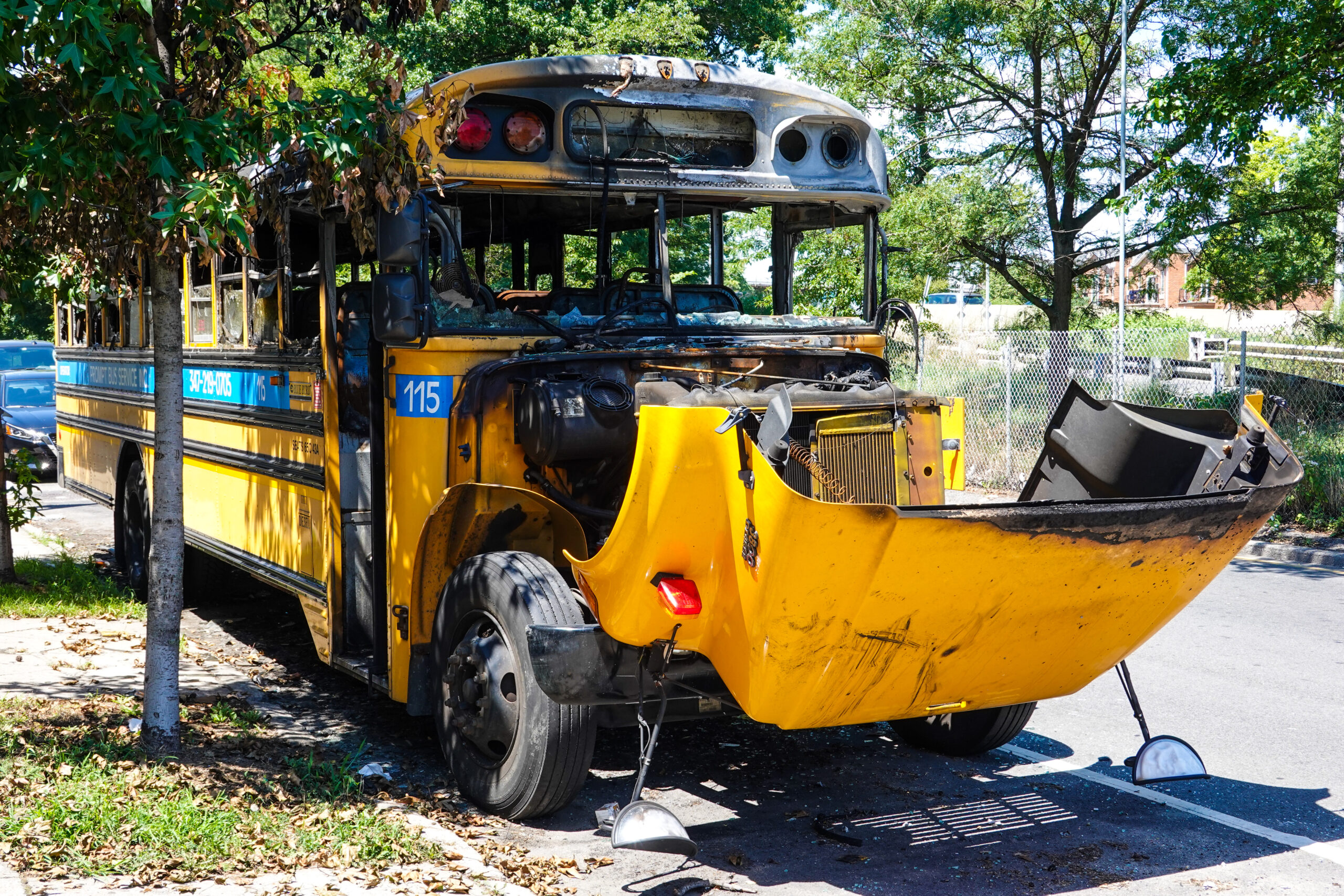
Our experience clearly demonstrates that the best approach to fire suppression in school bus transportation is using a water-based system as opposed to a dry-powder system. Dry powder is sometimes used in pupil transportation fire suppression systems, but a water-based system is much more efficient at quickly knocking down the flame source and keeping it suppressed. Any type of fire suppression system will initially knock down the flame, but the key is making sure that it remains suppressed.
Any type of thermal incident has three elements: flame, oxygen, and heat – the latter of which can cause spontaneous combustion. A water-based system attacks all three elements – eliminating the fuel source, the oxygen which feeds the flame, and the heat source itself (which can, in many instances, lead to a reflash). Water-based fire suppression effectively suppresses the fire and also serves to reduce temperatures and prevent reflash.
A water-based system creates steam to kill the flame’s oxygen. It eliminates the heat source because water will touch a 600-degree fire, for example, and knock it down to 100 degrees in a matter of seconds. Finally, our system contains a small element of Aqueous Film-Forming Foam (AFFF) which coats the fuel source and fights the possibility of a reflash. It is a holistic view of fighting fires.
We also see advantages to mechanically-based systems which activate in the presence of a heat source, versus systems which activate from an electronic signal. A heat-sensitive tube – installed in the engine compartment as well as the battery compartment – bursts when it reaches a specific temperature, releasing pressure from the fire suppression bottle and activating the nozzles/mist.
Many systems will also only activate for anywhere from 15 to maybe 30 seconds maximum, but we recommend activating anywhere from 45 seconds to 60 seconds.
A Rising Problem
A report by the U.S. DOT’s Volpe Center indicates that there is a minimum of one school bus fire per day in the United States. But that is only on a calendar-year basis. If you look at it from a school-year (180 days), then there are approximately two school bus fires a day.
There are no injuries in the majority of these events, which is a great. But unfortunately, in 2017, there was a tragic incident in Iowa wherein a driver and a student actually lost their lives in a fire on a school bus. As a result of that fire in Iowa, the National Transportation Safety Board (NTSB) recommended that all new school buses be equipped with fire suppression at delivery and all existing school buses in the fleet be upgraded with fire suppression systems. NTSB does not carry the weight of law, but that recommendation is very critical to understanding the threat which bus fires present to pupil transportation.
Many transportation providers feel they do not need fire suppression – until the moment that they really do need fire suppression. We must be prepared for when the need arises. You are transporting the nation’s most precious cargo, and you need to make sure that you are doing everything possible to account for any type of scenario. The actual expense of fire suppression is minimal when you consider a 15-year life cycle of a school bus. It is the right thing to do to prepare for that terrifying contingency.
While there is no federal mandate for fire suppression on school buses, there are certain states that mandate fire suppression systems – specifically when transporting children with special needs. It becomes a question of “doing the right thing” from a risk management standpoint. The primary goal of any pupil transportation professional is very simple: make sure students get to school safely and make sure they get home safely. From that perspective, fire suppression is imperative.
Alternative Propulsion and Fire Suppression
Fire suppression comes down to flammability of the fuel source. Diesel, gasoline, and propane each have different flashpoints. The lower the flashpoint, the greater the fire risk – and propane and gasoline have much lower flashpoints than diesel fuel.
Electrification is a new consideration for pupil transportation and United Safety will be conducting significant studies into all-electric fire suppression systems. We do know that the Federal Aviation Administration (FAA) has stated that water-based systems are the most appropriate for fighting lithium-ion fires, but we need to do more research into where and how the all-electric bus should be protected.
The Path Forward
From the standpoint of fire safety, nothing takes the place of an effective preventative maintenance program. From there, drivers must be doing a very thorough pre-trip inspection every day. That means not just checking the boxes and walking around the vehicle, but actually looking for problems in the daily inspection.
Finally, when you do have fire suppression installed on your vehicles, make sure you are conducting the proper annual and interval inspections at the correctly regimented time frames. Those requirements vary between fire suppression systems, so make sure you are on top of your specific system’s capabilities and requirements.
Ken Hedgecock serves as national sales manager at United Safety. Visit www.unitedsafetycorporation.com for more information.


